Two covers for the same book published five years apart by the same company. How could they be so very different in such a short time?
This first one is from 1943 and includes on the first page:
In order to cooperate with the government's war effort, this book has been made in strict conformity with WPB regulations restricting the use of certain materials.
Editorial decided to, I guess, take a more literal direction for the cover illustration. Okay, the Bishop looks a bit like the Crypt Keeper, but that's coming from my 2010 perspective, not 1943.
Paperback books were still relatively new when this one was marketed so perhaps they hadn't really grasped the idea of splashing sexy babes and rugged guys on the cover. Still, Pocket Books put out 8 editions of this book in 1943. Have no idea if they all had this cover. This one is a second printing.
Notice on the back cover the "Send this book to a boy in the armed forces anywhere for only 3¢". And below are a couple pages from the interior. One is Pocket Books speaking to their buyers. The other is trying to show support for the war effort.
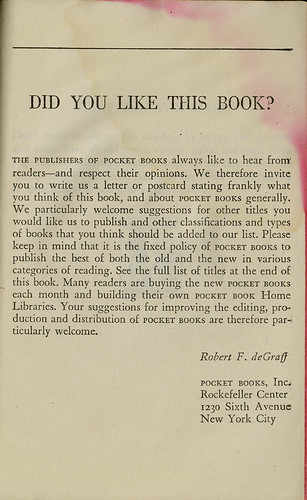
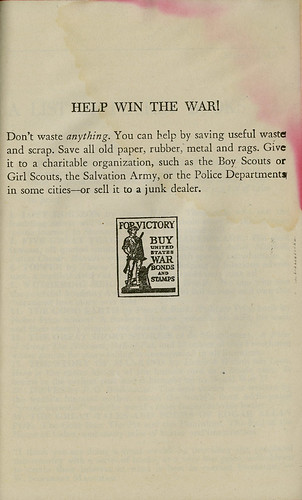
By 1948 the war was over and the boys were back and babes were primping. No stuttering Bishop on this cover. This was the 22nd edition by Pocket Books.
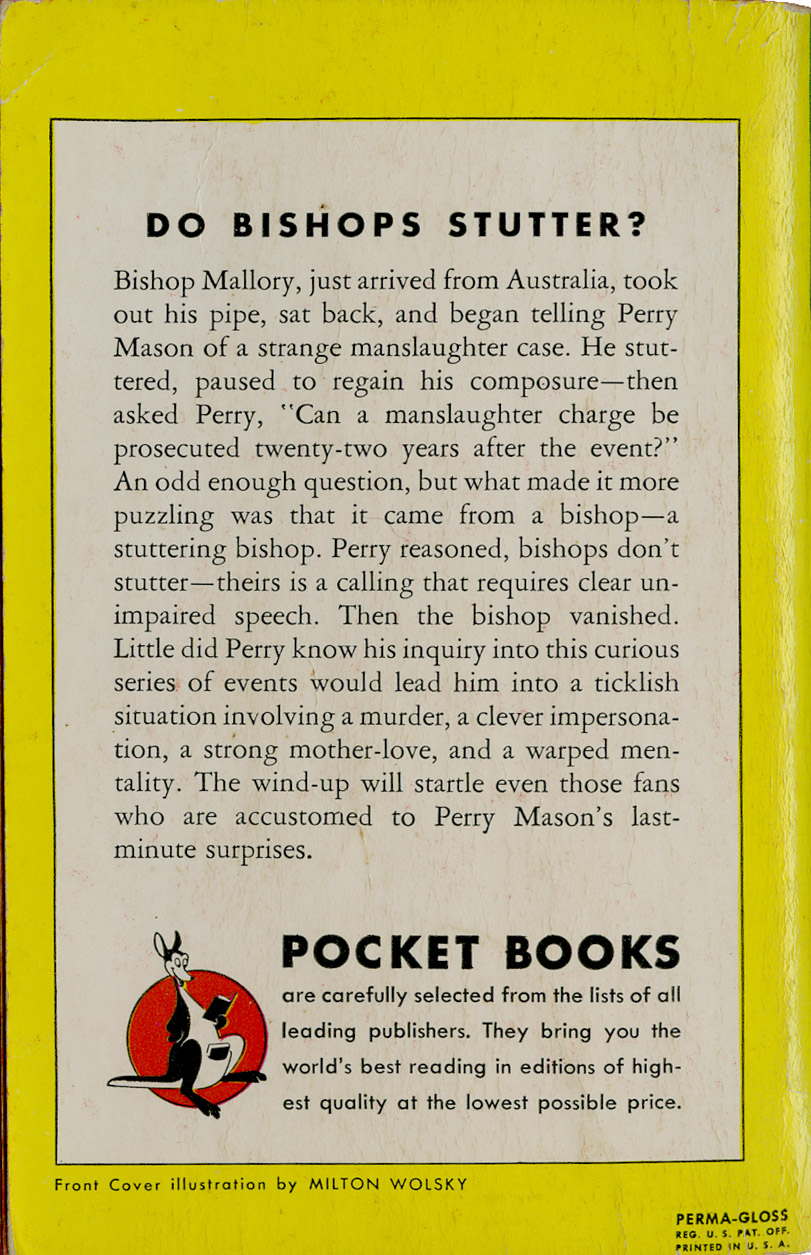
Brief history of Pocket Books thanks to Wikipedia:
Pocket produced the first mass-market, pocket-sized paperback books in America in early 1939 and revolutionized the publishing industry. The German Albatross Books had pioneered the idea of a line of color-coded paperback editions in 1931 under Kurt Enoch; Penguin Books in Britain had refined the idea in 1935 and had 1 million books in print by the following year.In 1944, the founding owners sold the company toMarshall Field III, owner of the Chicago Sun newspaper. Following his death, in 1957, Leon Shimkin, a Simon & Schuster partner, and James M. Jacobson bought Pocket Books. Simon & Schuster acquired Pocket in 1966.Penguin's success inspired entrepreneur Robert de Graff, who partnered with publishers Simon & Schuster to bring it to the American market. Priced at 25 cents and featuring the logo of Gertrude the kangaroo (named after the artist's mother-in-law), Pocket Books' editorial policy of reprints of light literature, popular non-fiction, and mysteries was coordinated with its strategy of selling books outside the traditional distribution channels. The format size, and the fact that the books were glued rather than stitched, were cost-cutting innovations.The first ten numbered Pocket Book titles:Lost Horizon by James HiltonWake Up and Live by Dorothea BrandeFive Great Tragedies by William ShakespeareTopper by Thorne SmithThe Murder of Roger Ackroyd by Agatha ChristieEnough Rope by Dorothy ParkerWuthering Heights by Emily BrontëThe Way of All Flesh by Samuel ButlerThe Bridge of San Luis Rey by Thornton WilderBambi by Felix SalterThe edition of Wuthering Heights hit the best-seller list, and by the end of the first year Pocket Books had sold more than 1.5 million units. Robert de Graff continued to refine his selections with movie tie-ins and greater emphasis on mystery novels, particularly those of Christie and Erle Stanley Gardner.Pocket and its imitators thrived during World War II because material shortages worked to their advantage. During the war, Pocket sued Avon Books for copyright infringement: among other issues, a New York state court found Pocket did not have an exclusive right to the pocket-sized format (both Pocket and Avon published paperback editions of Leslie Charteris' The Saint mystery series, among others). (SOURCE: Wikipedia)
Okay, I love that the kangaroo logo is based on the original artist's mother-in-law. So who did the update in 1948? Had the mother-in-law gotten younger and perkier? She apparently had lasik surgery or was wearing contacts.
And, one other little bit of information is that Pocket Books is headquartered in the same location it was in 1943. I guess once you get a good spot in Manhattan you sit on it. Just as Gertrude, the kangaroo.
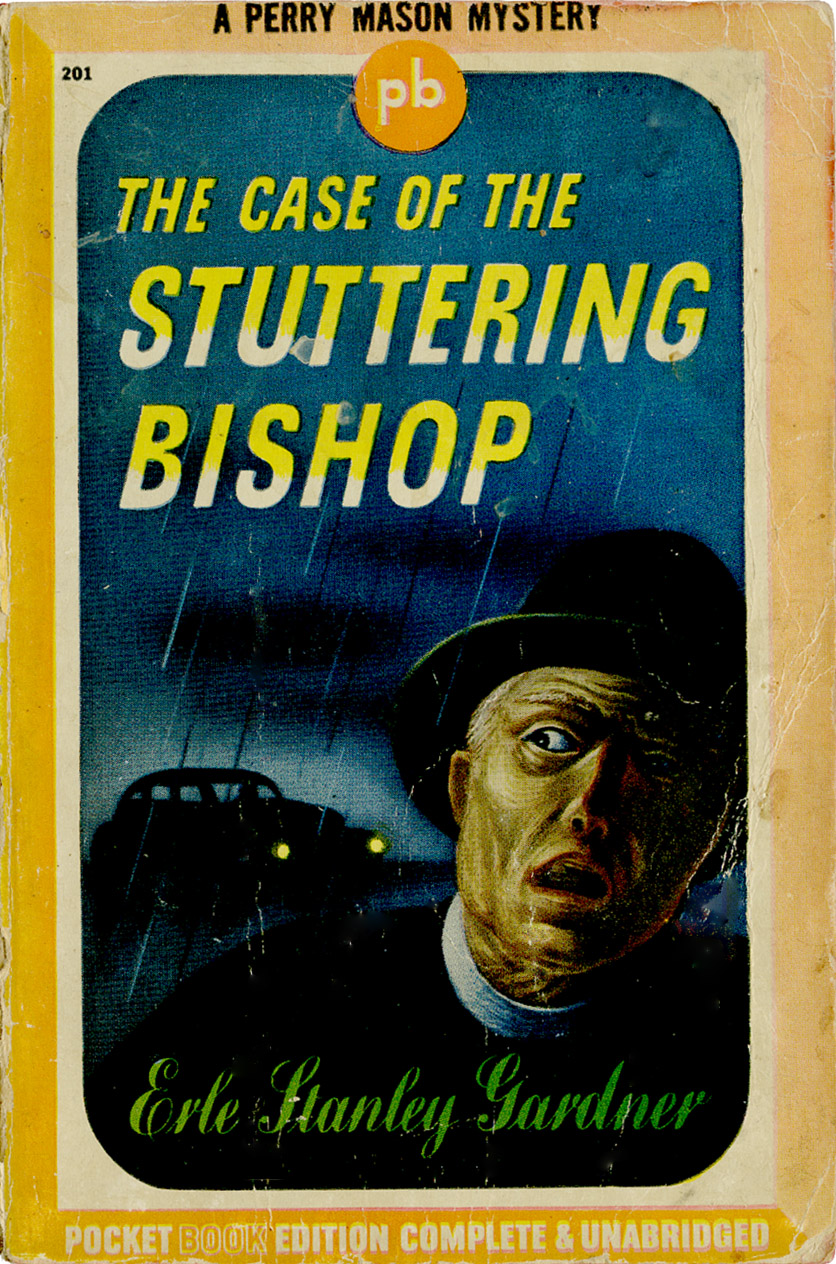
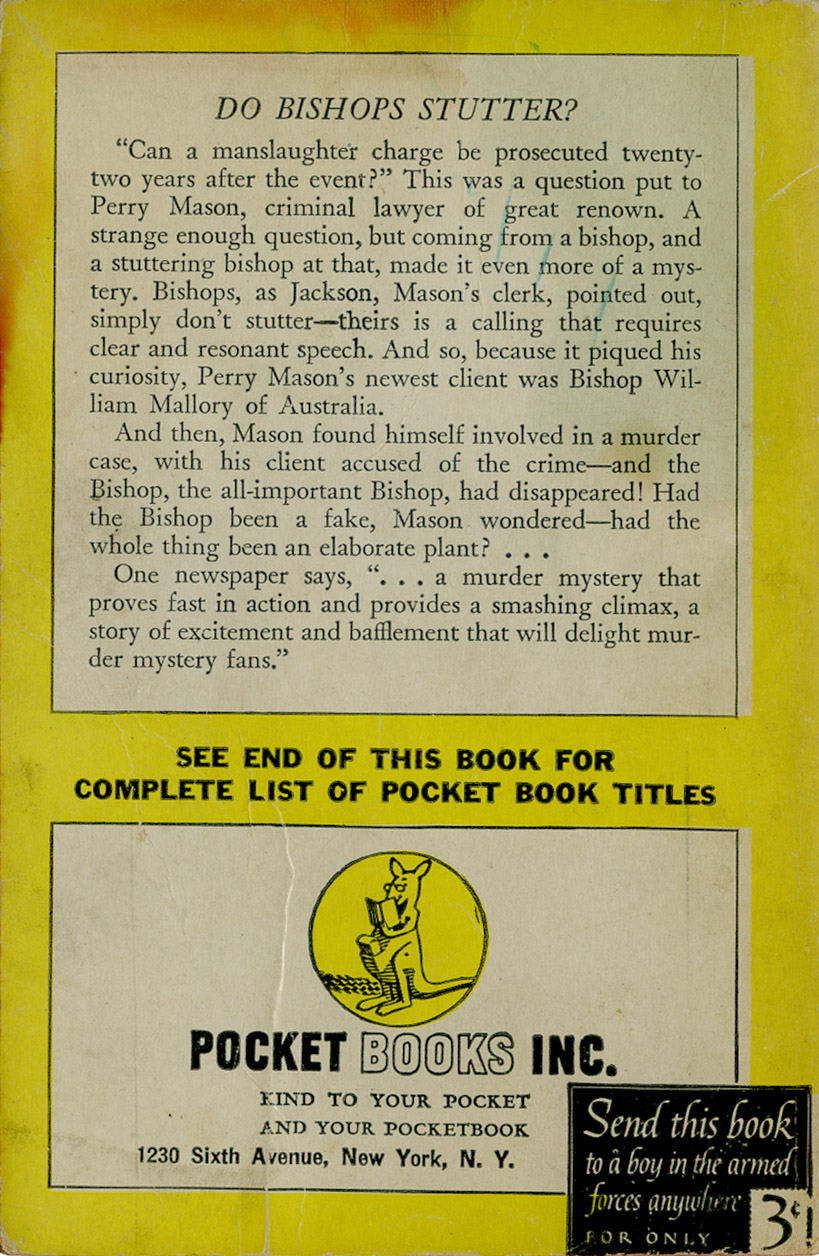
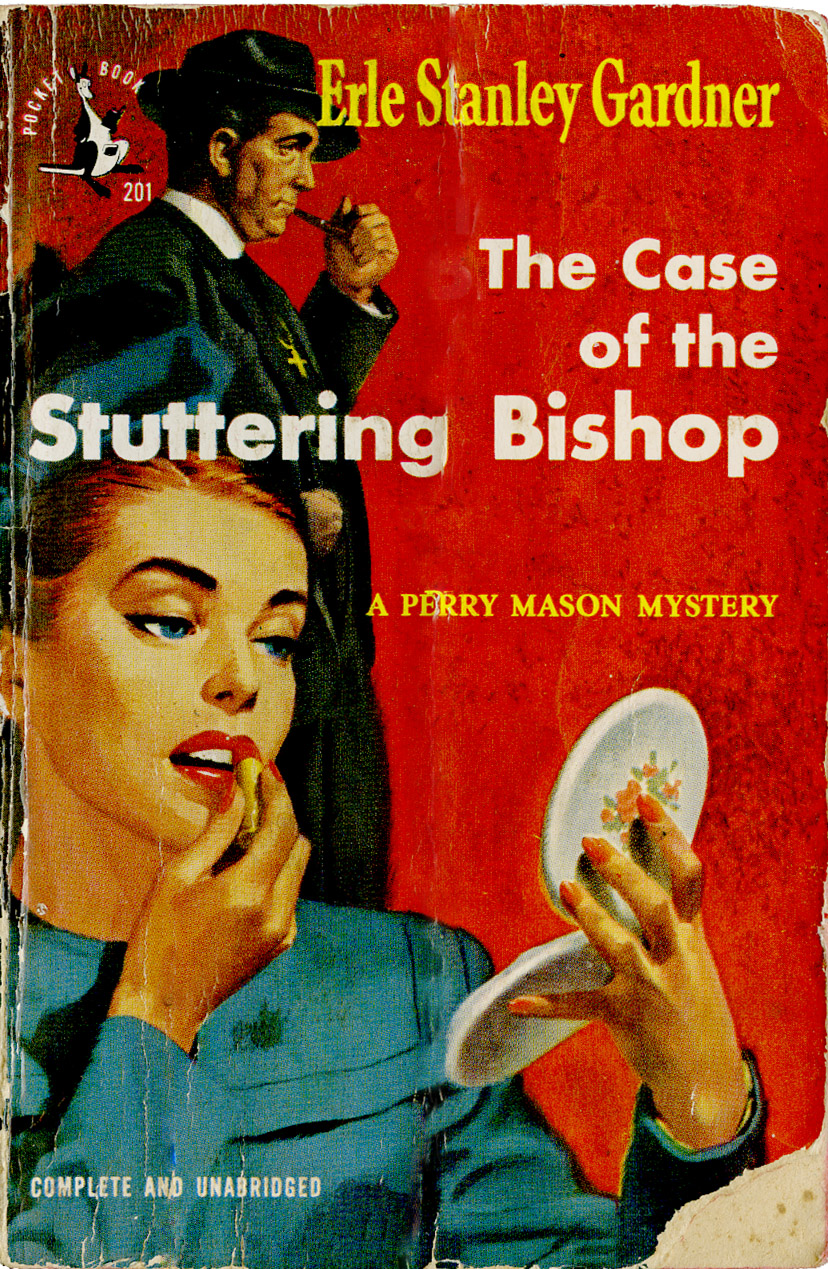














Just got through watching as many old Perry Mason programs as we could lay our hands on. Worth a chuckle or two, perhaps three.
ReplyDeleteLucky boy! I enjoyed the old b/w series, the later color ones not so much. I like Paul Drake played by Hedda Hopper's son. There's a local station in San Francisco that has been playing the old b/w version every day at noon for decades. My landlady, who loved the books, was not to be disturbed when the show was on.
ReplyDeleteIf you've got a Netflix account, a large number (if not all...) seasons of Perry Mason are available! I've been working my way through them for 2 or 3 years now.
ReplyDeleteOddly enough, I first saw Perry Mason when it aired on a local station...at noon! They don't play it anymore, but they do play Father Knows Best. Not hardly comparable, but it's a nice show.
I do buy books for their covers, so I would definitely opt for the second one. Both the cover and the kangaroo are new and improved.
ReplyDeleteJosiah,
ReplyDeleteNope, I don't have Netflix. Satellite with more stuff to watch than I could ever get time for. However, every so often I turn on good old Perry at noon and have him playing in the background as I work. I still remember watching it as a child. In fact, I learned what prostitution was from a Perry Mason. I can still remember watching an episode when I was around 10 and turning to my dad and asking "Daddy, what's a prostitute?" A character on the show was sitting on the stand talking about. So good ol' Perry was educational.
Christine,
I love that original kangaroo. She looked like a nice little ol' kangaroo. Then she went and got citified.
I enjoyed seeing both versions of the book and the interesting transformation from dodgy bishop to sexy siren! What worries me most are the strange pink stains on the book :o blood perhaps?
ReplyDeleteJanice,
ReplyDeleteThat's pretty funny. I hadn't even thought of that. Well, it's an old book with outside trim edges in red and somewhere along the line the book got damp and things just sort of got bloody looking. No wonder the Bishop looks so frightened.
Well if it's not blood, it might be lipstick ;)
ReplyDeleteLipstick. Hmmmm...you know what's funny about this is that inside the back cover a previous owner drew hearts with names inside. I think you're onto something!
ReplyDeleteDid you ever find out who drew the 1948 version of Gertrude?
ReplyDeleteSorry to say, no.
Delete